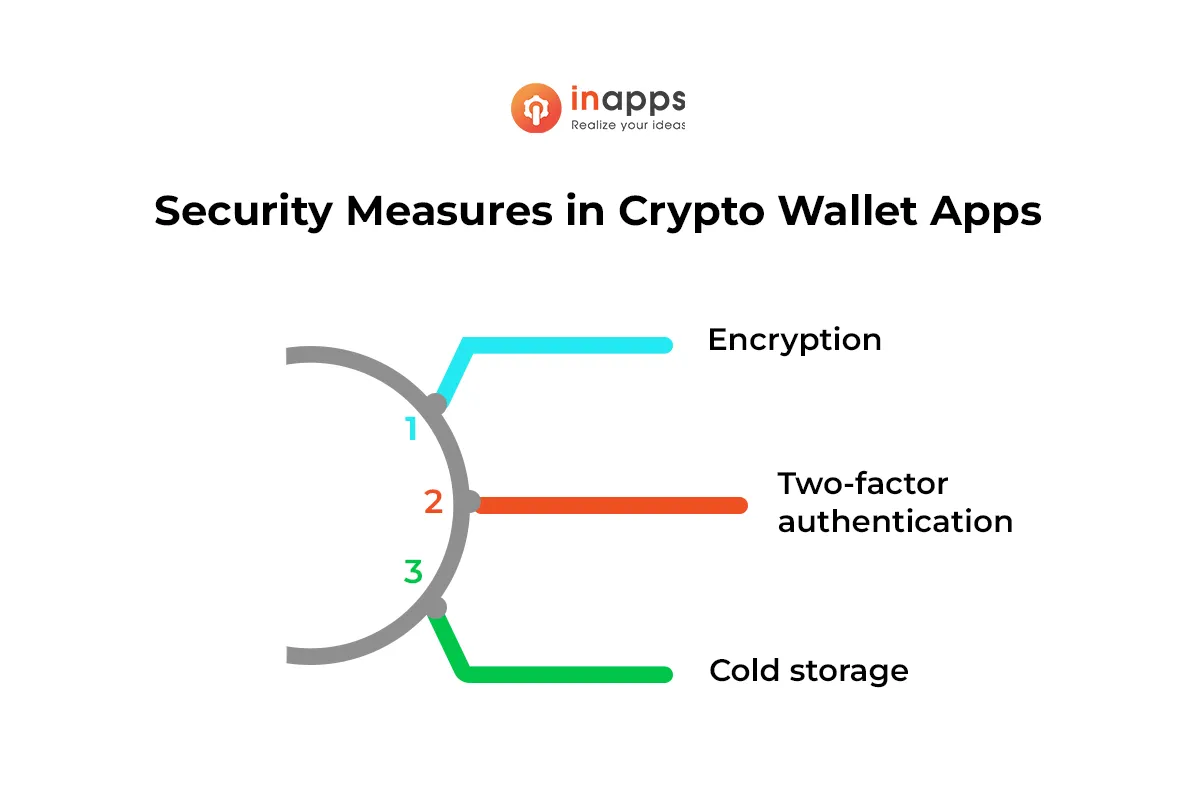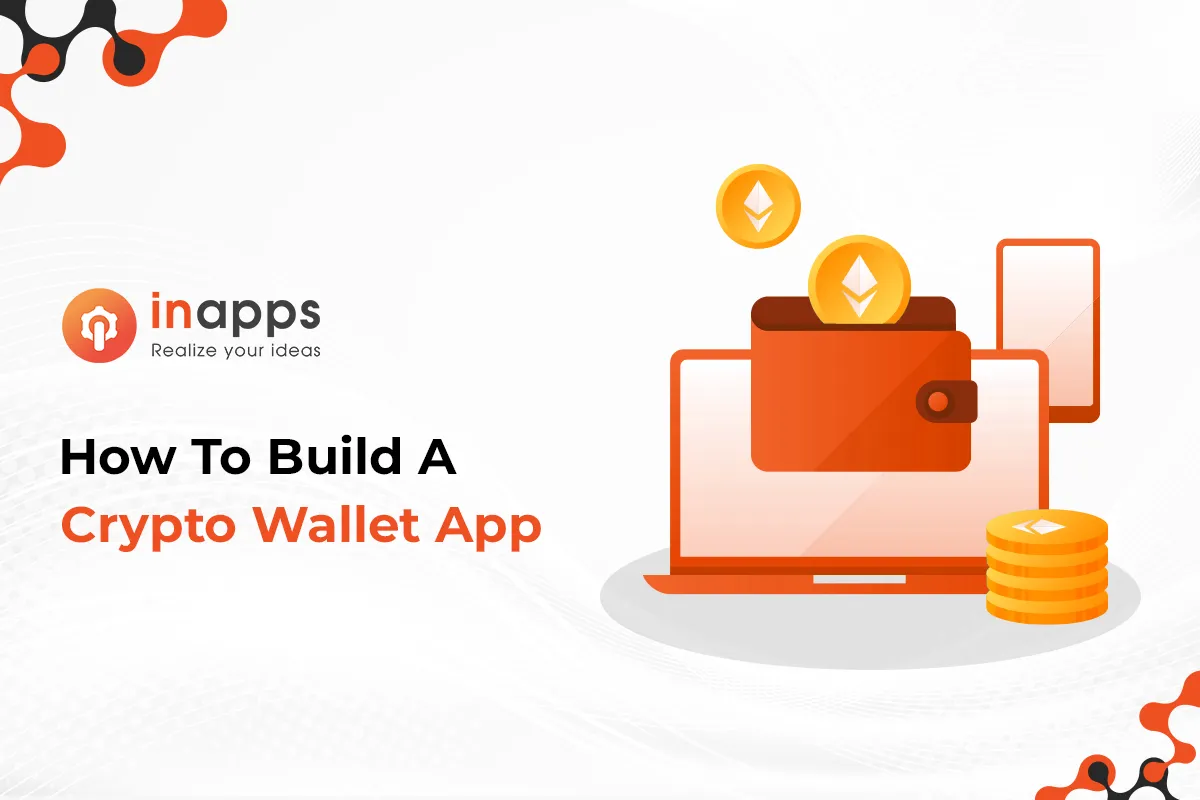Imagine trading and managing cryptocurrencies right from your smartphone, anytime, anywhere. This convenience is part of a growing trend, as Market Research Future (MRFR) estimates the global crypto wallet market to reach USD 48.27 billion by 2030, with a Compound Annual Growth Rate (CAGR) of 24.8% during the forecast period (2023-2030). This idea excites many, but building a crypto wallet app can be daunting due to its technical complexity and security challenges.
This guide simplifies the process of creating your crypto wallet app. We’ll focus on key aspects like security, ease of use, and necessary features. By the end of this article, you’ll know the steps and technologies required to build a crypto wallet app that meets industry standards and suits your specific needs. Whether you’re a developer or just starting, you’ll find valuable insights to help you get started.
1. Planning To Create A Crypto Wallet App
1.1 Define Your Target Audience
When you make a crypto wallet app, you must understand who your app is for. Are you targeting novice users who need a user-friendly interface with basic functionalities? Or are you catering to tech-savvy individuals who might appreciate advanced features such as built-in trading or support for multiple cryptocurrencies? Your target audience will directly influence the design and functionality of your wallet app.

Novice Crypto Users
For novice crypto wallet users who are new to cryptocurrency, they may find the technology intimidating. They need a simple, intuitive interface with basic functionalities like sending and receiving crypto, along with helpful guidance and educational resources. Coinbase has successfully targeted novice users by offering an easy-to-use interface, straightforward setup processes, and educational content to help newcomers understand crypto transactions.
Tech-Savvy Users
This group is not only familiar with cryptocurrencies but also comfortable with utilizing advanced features like custom transaction fees, decentralized finance (DeFi) integrations, or trading directly from the wallet. MetaMask serves tech-savvy users well by providing features such as integration with various Ethereum-based DeFi platforms, customizable gas fees, and in-app token swaps.
Security-Conscious Users
These users place the highest priority on the security of their assets. They prefer wallets that offer robust security features such as hardware wallet integration, multi-signature support, and two-factor authentication. Trezor Wallet is a prime example that caters to security-focused users by offering a hardware wallet solution that stores cryptocurrencies offline, safeguarding them against online threats.
1.2 Choose the Type of Crypto Wallet App To Create
Another critical choice you’ll face when you create a crypto wallet app is deciding between a hot wallet and a cold wallet. This choice will significantly impact how your app operates and its key features.
Hot Wallets
A hot wallet stays connected to the internet, making it very convenient for users who frequently trade or use their cryptocurrencies. It’s ideal for those who value quick and easy access to their funds for regular transactions. However, because it’s always online, a hot wallet is more vulnerable to security threats. To safeguard users’ assets, integrating strong encryption and multi-factor authentication is essential.
Cold Wallets
On the other hand, a cold wallet is not connected to the internet and is used mainly for storing cryptocurrencies safely. Types of cold wallets include hardware wallets, like USB devices, and paper wallets, which are printed with your public and private keys. The main advantage of cold wallets is their security; being offline shields them from online hacking attempts. While they offer superior protection, cold wallets are less convenient for frequent transactions.
Integrating Both Options
To meet the needs of different users, many successful apps provide both hot and cold wallet options. This approach allows users to decide how to store and manage their cryptocurrencies based on their needs. For instance, someone might use a hot wallet for daily spending and a cold wallet to securely store larger amounts they don’t need regular access to.
In summary, whether you aim to build a crypto wallet app, balancing convenience and security by offering both hot and cold wallets can attract a wider range of users. This strategy ensures that your app is versatile enough to appeal to both active traders and those more concerned with the security of their digital assets.
2. Choosing the Right Technology Stack For Your Crypto Wallet App
Choosing the right technology stack is crucial when you’re figuring out how to create a crypto wallet app. This decision will significantly impact your app’s functionality, user experience, security, and scalability. Here’s a detailed guide on selecting the most appropriate technologies for building a crypto wallet app:
2.1. Frontend Development
For the user interface, you’ll want technologies that are robust and can provide a smooth and secure experience.
- Web: Consider using React or Angular. These frameworks are popular for their efficiency, rich libraries, and strong community support.
- Mobile: For mobile applications, Swift (for iOS) and Kotlin (for Android) are top choices because they are the native programming languages for their respective platforms, offering optimal performance and integration capabilities. Alternatively, if you plan to develop a cross-platform mobile app, React Native or Flutter could be effective, allowing you to maintain a single codebase for both Android and iOS.
2.2. Backend Development
The backend will handle business logic, user authentication, data storage, and securely interacting with the blockchain.
- Node.js: This is a popular choice due to its non-blocking I/O model, which is great for handling multiple requests, a common requirement for crypto wallet apps. Express.js, a framework for Node.js, helps in building fast and scalable server-side applications.
- Python: Known for its simplicity and versatility, Python can be a good choice, especially with frameworks like Django or Flask, which can speed up the development process and ensure security, which is paramount for a crypto wallet.
2.3. Blockchain Integration
To interact with blockchain networks, your app will need to integrate with blockchain APIs and possibly interact directly with blockchain nodes.
- Web3.js or Ethers.js: If you’re working with Ethereum, these JavaScript libraries are essential as they allow you to interact with the Ethereum blockchain, smart contracts, and Ethereum nodes directly from the browser or server.
- BitcoinJS (for Bitcoin): A JavaScript library for Bitcoin applications that can help you handle various Bitcoin-specific operations such as building transactions, managing wallet addresses, etc.
2.4. Database
Choosing the right database is key for managing data efficiently and securely.
- MongoDB: A NoSQL database that is good for handling large volumes of unstructured data, which is typical in applications that need to scale quickly.
- PostgreSQL: A powerful, open-source relational database system that is highly extensible, which is useful for applications requiring reliable transactions and complex queries.
2.5. Security Tools
Security is non-negotiable in crypto applications, and you’ll need tools and practices that help protect user data and assets.
- OAuth: For secure user authentication.
- JWT (JSON Web Tokens): For securely transmitting information between parties as a JSON object.
- HTTPS and SSL/TLS: Ensure that data sent between the client and server is encrypted.
2.6. DevOps Tools
To deploy and maintain your application, consider using:
- Docker: For containerizing your application, ensuring it runs consistently across different computing environments.
- Kubernetes: For automating deployment, scaling, and management of containerized applications.
- Jenkins or GitHub Actions: For continuous integration and continuous deployment (CI/CD), which helps in automating the software release process.
3. Implementing Security Measures Into the Crypto Wallet App
When learning how to create a crypto wallet app, implementing robust security measures is paramount. This step is non-negotiable because crypto wallets often handle sensitive personal information and large sums of digital assets, making them prime targets for cyber threats.

A foundational security feature is encryption. Encryption secures data at rest and in transit, ensuring that sensitive information such as private keys and transaction details cannot be intercepted or deciphered by unauthorized parties. For example, employing AES (Advanced Encryption Standard) provides a high level of security, which is why it is widely used in financial applications.
Another essential measure is two-factor authentication (2FA). This adds a layer of security by requiring users to provide two forms of identification before accessing their accounts. Commonly, this involves something the user knows (a password) and something the user has (a mobile device to receive a verification code). Implementing 2FA can significantly reduce the risk of unauthorized access, even if a password is compromised.
Furthermore, cold storage capabilities within the app can enhance security for users by allowing them to store their private keys offline. Cold storage options, such as integrating hardware wallet support, protect assets from online vulnerabilities.
When determining how to create a crypto wallet app, these security strategies—encryption, two-factor authentication, and cold storage—play crucial roles in safeguarding user data and assets. Implementing these can help build trust and reliability, key factors for success in the competitive crypto wallet market.
4. Developing the User Interface of Crypto Wallet App
As mentioned previously, understanding your target audience’s preferences and needs will affect your app design. So start with user research. This information will guide the design process, ensuring that the interface is tailored to the user’s experience level. For example, novice users will benefit from a simple, clean design with clear instructions, while experienced users may appreciate advanced features being easily accessible.
Next, focus on wireframing and prototyping. These early designs provide a visual blueprint of the app’s layout. Tools like Sketch or Adobe XD can be used to create these wireframes. For instance, you might design a dashboard where users can quickly view their balance, and recent transactions, and access their wallet functions with minimal navigation.
Incorporate usability testing into the process. Gather feedback on the prototype from potential users to identify any usability issues before moving forward. This step ensures that the final product will be well-received and functional for your target audience.
Finally, when you’re ready to build a crypto wallet app, pay close attention to the aesthetics and functionality of the interface. Use consistent, soothing color schemes and typography that make reading and navigating the app easy. Accessibility features, like text-to-speech or large buttons, can also be included to cater to all users.
In summary, the development of UI in how to create a crypto wallet app involves understanding user needs, creating structured wireframes, conducting thorough usability testing, and finalizing with a focus on aesthetics and accessibility. These steps help guarantee that the app is both functional and appealing to users.
5. Test and Launch Crypto Wallet App
For this close-to-final step in our guide, start with unit testing to check individual components for correct behavior. Integration testing follows, ensuring that the app’s modules work together seamlessly. Next, user acceptance testing (UAT) is critical, as it involves real-world users, perhaps like yourself, interacting with the app to identify any usability issues or bugs that weren’t caught during earlier tests. This stage is essential for gathering feedback and making user-driven improvements.
Once testing is complete and the app meets all specifications and user expectations, you’re ready to launch. Begin with a soft launch to a limited audience to gauge performance and collect more feedback. Adjustments based on this phase can greatly enhance the final product. Finally, prepare for the official launch, which should include a robust marketing strategy to effectively promote the app across various platforms.
6. Maintaining and Updating the Crypto Wallet App
After you launch your crypto wallet app, it’s important to keep it fresh and running smoothly. Make sure you regularly check the app’s performance, fix any bugs, and update it to work with new versions of operating systems and devices. If you outsource your crypto wallet app development, your outsourcing company must have post-launch care and maintenance in case something pops up.
Security is a big deal in the crypto world. With new threats always emerging, you need to keep your app secure. Regular security checks and updates will protect your users’ data and build their trust. Also, keep an eye on user feedback and the latest market trends to keep improving your app. Adding new features based on what users want and the latest tech can help your app stay competitive and appealing.
Remember, launching your app is just the beginning. Keeping it updated and in good shape is essential for a smooth, secure experience that meets user needs and keeps up with industry changes. Contact InApps Technology if you want some help to create a crypto wallet app.
Let’s create the next big thing together!
Coming together is a beginning. Keeping together is progress. Working together is success.




















